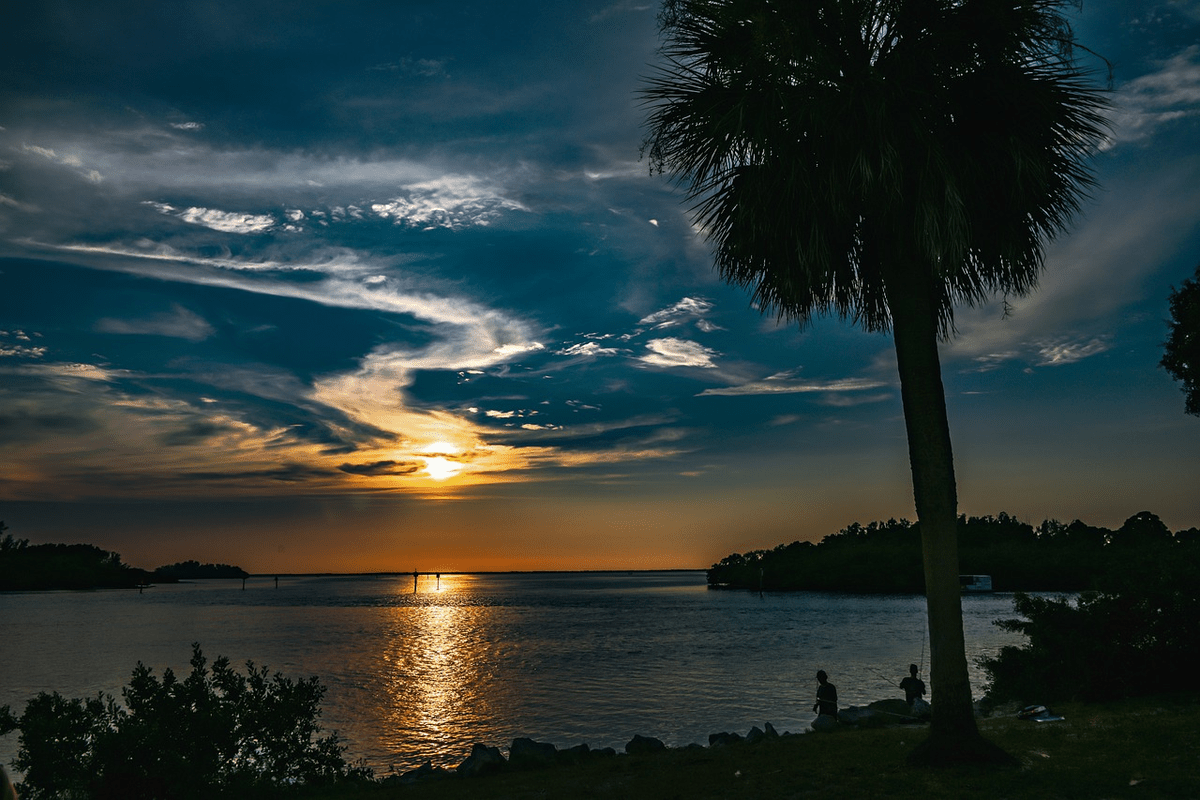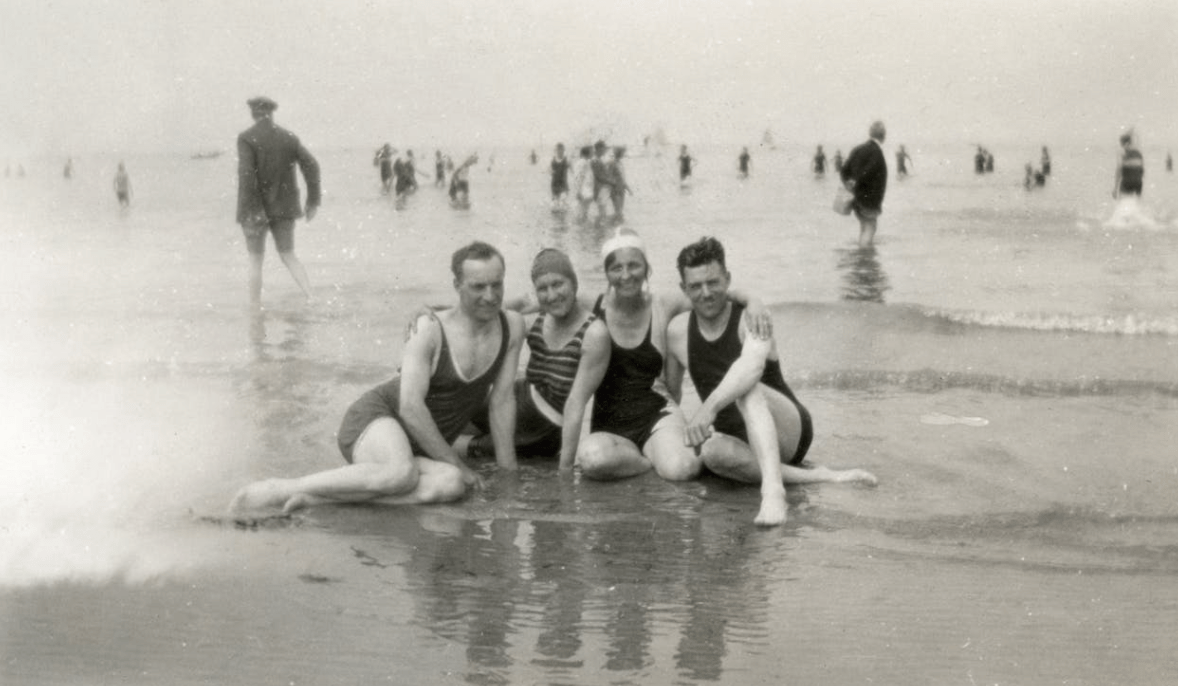Navarre Beach's history is intertwined with the captivating stories of Native American tribes and early settlers who found solace in this haven, and then with the booming tourism industry in the region.
When you're heading somewhere new—whether it's the Rocky Mountains, the Gulf Coast, or anywhere in between—getting to know a bit of the local history is like putting on a fresh pair of glasses. Suddenly, everything feels more interesting, more alive, and way more fun to explore.
Planning a trip to Navarre Beach? Then you're in the right spot! In this blog, I'll take you on a fun little journey through the history of Navarre Beach—from its quiet beginnings to how it became the laid-back vacation favorite we know and love today. Let's dive into the stories that make this beach town more than just a pretty view!
Here's your first glimpse into the story:
At Navarre Beach Properties, we've got a variety of gorgeous vacation rentals, and I like to think we're pretty much local experts on all things Navarre Beach—no bragging, promise! Our destination blog is filled with helpful posts on beach day tips, where to find the best craft beer and even a quick history of Navarre Beach. First time visiting Navarre Beach? take a look at these great tips.
Let's explore!

Before 1500: Who Lived in Navarre Beach First?
Archaeological evidence shows that the Timucua and the Apalachicola tribes were quite possibly the first inhabitants of the area today known as Navarre Beach, and they stayed there for thousands of years before the Europeans arrived in 1500. It's known that these groups had pretty complex societies and elaborate mound-building traditions.
What was life on the coast like back then?
The sugary white sands and emerald waters were already there, and these tribes would have had lives that revolved around another amazing aspect of the region—the bounty of the sea. Much like today, their diet was rich in seafood. Their dwellings were a little different though, more like thatched-roof houses made from wood and palmetto leaves.
Sounds like paradise, right?
No permanent structures exist from this period. What's left are only objects like tools, pottery shards, and piles of discarded shells and animal bones. However, based on these remnants, experts can paint a picture of what life was like during those times.

What was the arrival of Europeans in Navarre Beach like?
The arrival of Europeans in the 1500s marked a significant shift in the area's history, affecting its original inhabitants.
Álvar Núñez Cabeza de Vaca, a Spanish explorer, potentially landed in the Florida Panhandle in 1519. Historical records don't definitively pinpoint his exact landing site, but it's possible that he ventured into the Navarre Beach area.
Imagine stepping onto a pristine beach with sugar-white sand and crystal-clear water teeming with life. This is what greeted the Europeans if they indeed landed in Navarre Beach. They likely found a land abundant in natural resources – lush vegetation, plentiful fish, and readily available game.
Guess why they came in the first place
The driving force behind European exploration of the Americas was, surprise surprise, a potent mix of ambition and greed. They were looking for gold, fueled by legends of El Dorado, a mythical city overflowing with riches. But there were also other reasons, such as expanding trading routes and religion.
What happened to the native populations?
The arrival of Europeans often had a devastating impact on indigenous populations. Diseases brought by Europeans, to which the Native Americans had no immunity, decimated their numbers. Also, communication between the Spanish and the Native Americans was likely fraught with difficulties. Misunderstandings and cultural clashes could have easily arisen.
Besides, the natives didn't give up on their land easily, so conflict over land and resources led to violence and displacement.

What was the early settlement in Navarre Beach like in the 1800s?
The first European settlers in Navarre Beach arrived in the 1800s, primarily interested in fishing and agriculture. Who wouldn't be?
The rich bounty of the Gulf and the fertile land offered a chance to create a sustainable livelihood. At first, these were small fishing communities dotting the coastline, their days filled with hauling in nets and tending to crops. Not too shabby, right?
A U.S. territory
In 1821, Florida became a U.S. territory, a shift that sparked increased interest in land development. But still, at that time, Navarre Beach's remote location and lack of a major harbor likely kept it from becoming a major development hub.
Around the 1850s, the name "Navarre" first appeared on maps. The origins of this name are a little blurry, but it might have been from a prominent settler who, along with his wife, named the area after the province of Navarre in Spain.
Tourism? Not Quite Yet.
While the 1800s saw increased interest in Florida, organized tourism was still in its infancy. Travel was arduous and expensive, limiting visitors to the wealthy and adventurous. Navarre Beach's remoteness likely kept it off the radar of most travelers.

How did Navarre Beach evolve in the 1900s?
The dawn of the 20th century found Navarre Beach still a world away from the bustling tourism haven it would become.
Transportation was primarily by boat or horse-drawn carriage, making access to the area a challenge. This remoteness kept development at bay, preserving the natural beauty of the landscape. The area was pretty much an untouched paradise.
Only a handful of families may have chosen this isolated haven as their permanent home. They lived a self-sufficient lifestyle, relying on fishing, farming, and the bounty of the surrounding environment. Sounds pretty chill to us!
1940s-1950s: a whisper of tourism
The post-war years saw a slow but steady trickle of tourists seeking an escape from the hustle and bustle of everyday life. Catering to anglers, small fishing lodges offering basic accommodations and guided excursions began to appear.
For those seeking a longer stay, simple rental cottages sprang up along the beach. These weren't the luxury retreats we know today, but they certainly marked the start of the short-term rental tradition in the area.
Slowly, more and more people discovered this hidden gem and spread the word about its tranquility and natural wonders.
1960s-1970s: the bridge opens the door
The construction of the Santa Rosa Island Authority Bridge in 1964 marked a pivotal moment, making access to Navarre Beach a lot easier. This led to a surge in tourism but with a crucial difference. Condos and resorts began to appear, but they adhered to a lower-density approach, maintaining the area's laid-back charm.
In the 20th century, Navarre Beach went from a secluded sanctuary to a destination with a growing reputation – the groundwork was laid for the beach paradise it is known for today.

Paradise Found: What is Navarre Beach Like Today?
Fast forward to present-day Navarre Beach, and you'll find a destination that's successfully balanced growth with preserving its unique charm. The star of the show remains the breathtaking coastline, of course. The pristine white sands stretch as far as the eye can see, meeting crystal-clear waters.
Gone are the days of just a handful of cottages. Today, visitors can choose from a variety of options, including vacation rentals, family-friendly condos, and a few select resorts.
The best of all? Despite the growth, Navarre Beach hasn't lost its laid-back vibe. You won't find towering high-rises blocking the ocean views or a frenetic party scene. It's a place to unwind, reconnect with nature, and create lasting memories.
Is tourism a positive force for Navarre Beach?
Tourism plays a vital role in Navarre Beach's economy. The influx of visitors creates jobs in various sectors – accommodation, restaurants, retail stores, recreational activities, and more. This contributes to the overall economic well-being of the community.
Also, tourism-generated revenue can be used to invest in infrastructure improvements, beach maintenance, and environmental conservation efforts. This ensures a positive experience for both visitors and residents.
Looking ahead
We all know that tourism can also have negative environmental and social impacts, so it's essential to have sustainable practices in mind — and this goes for the authorities and visitors alike.
As Navarre Beach continues to evolve, its commitment to tranquility, nature, and a sense of community must remain. By embracing responsible tourism and sustainable practices, everyone involved ensures a bright future for both residents and visitors, preserving this unique coastal paradise for generations to come.
Navarre Beach: From Ancient Playground to Sunshine Paradise
While Navarre Beach might be known for its sugar-white sand and emerald waters today, its story stretches back much further than comfy lounge chairs and fruity cocktails.
This hidden gem boasts a rich and fascinating history that adds another layer to your beach escape. Understanding this past, from the first inhabitants to the evolution of tourism, will surely deepen your appreciation for the unique charm of Navarre Beach.
Want more tips to make your visit to Navarre Beach, Florida extra special? Head to our destination blog, where you'll find posts like the best pet-friendly spots in town, a guide to inshore and offshore fishing, and what it's like to live in Navarre Beach year-round — to name a few!
Wondering Where to Stay on Navarre Beach, FL?
While visiting Navarre, stay like a local and book one of our Navarre Beach vacation rentals with all the space, privacy, and home-like amenities you need. From luxury beachfront homes to amazing rental condos, at Navarre Beach Properties, we guarantee you'll have a 5-star experience during your Navarre Beach vacation.


